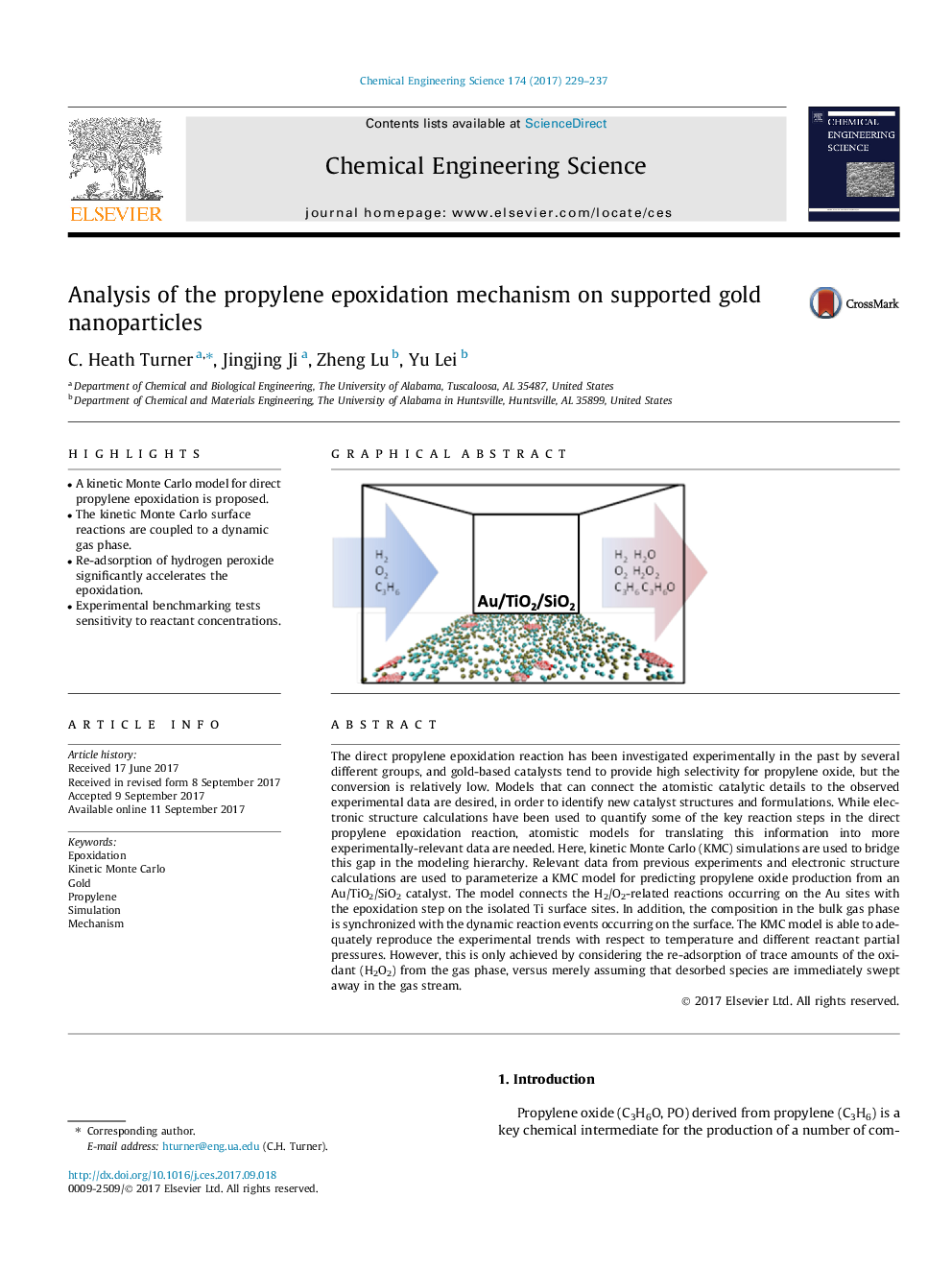| کد مقاله | کد نشریه | سال انتشار | مقاله انگلیسی | نسخه تمام متن |
|---|---|---|---|---|
| 6466899 | 1423245 | 2017 | 9 صفحه PDF | دانلود رایگان |
- A kinetic Monte Carlo model for direct propylene epoxidation is proposed.
- The kinetic Monte Carlo surface reactions are coupled to a dynamic gas phase.
- Re-adsorption of hydrogen peroxide significantly accelerates the epoxidation.
- Experimental benchmarking tests sensitivity to reactant concentrations.
The direct propylene epoxidation reaction has been investigated experimentally in the past by several different groups, and gold-based catalysts tend to provide high selectivity for propylene oxide, but the conversion is relatively low. Models that can connect the atomistic catalytic details to the observed experimental data are desired, in order to identify new catalyst structures and formulations. While electronic structure calculations have been used to quantify some of the key reaction steps in the direct propylene epoxidation reaction, atomistic models for translating this information into more experimentally-relevant data are needed. Here, kinetic Monte Carlo (KMC) simulations are used to bridge this gap in the modeling hierarchy. Relevant data from previous experiments and electronic structure calculations are used to parameterize a KMC model for predicting propylene oxide production from an Au/TiO2/SiO2 catalyst. The model connects the H2/O2-related reactions occurring on the Au sites with the epoxidation step on the isolated Ti surface sites. In addition, the composition in the bulk gas phase is synchronized with the dynamic reaction events occurring on the surface. The KMC model is able to adequately reproduce the experimental trends with respect to temperature and different reactant partial pressures. However, this is only achieved by considering the re-adsorption of trace amounts of the oxidant (H2O2) from the gas phase, versus merely assuming that desorbed species are immediately swept away in the gas stream.
141
Journal: Chemical Engineering Science - Volume 174, 31 December 2017, Pages 229-237
